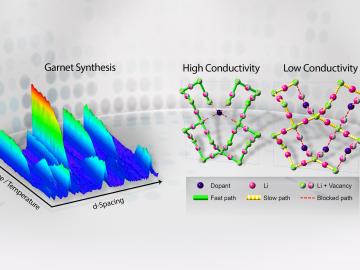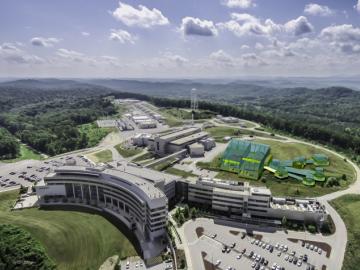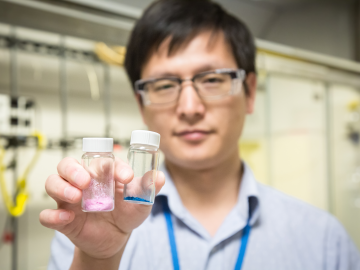Filter News
Area of Research
- (-) Neutron Science (10)
- Advanced Manufacturing (1)
- Biology and Environment (23)
- Biology and Soft Matter (1)
- Chemical and Engineering Materials (1)
- Chemistry and Physics at Interfaces (3)
- Clean Energy (14)
- Computational Biology (1)
- Computational Chemistry (1)
- Energy Frontier Research Centers (3)
- Functional Materials for Energy (3)
- Fusion and Fission (7)
- Fusion Energy (2)
- Geographic Information Science and Technology (1)
- Isotopes (7)
- Materials (12)
- Materials for Computing (4)
- Materials Synthesis from Atoms to Systems (3)
- Materials Under Extremes (3)
- National Security (3)
- Nuclear Science and Technology (2)
- Quantum Condensed Matter (1)
- Quantum information Science (2)
- Supercomputing (17)
News Type
News Topics
- 3-D Printing/Advanced Manufacturing (1)
- Artificial Intelligence (2)
- Biology (1)
- Biomedical (1)
- Chemical Sciences (1)
- Computer Science (3)
- Coronavirus (1)
- High-Performance Computing (1)
- Materials (1)
- Materials Science (2)
- Microscopy (1)
- Nanotechnology (1)
- Neutron Science (4)
- Quantum Computing (1)
- Quantum Science (1)
Media Contacts

A team led by the U.S. Department of Energy’s Oak Ridge National Laboratory demonstrated the viability of a “quantum entanglement witness” capable of proving the presence of entanglement between magnetic particles, or spins, in a quantum material.

An ORNL-led team comprising researchers from multiple DOE national laboratories is using artificial intelligence and computational screening techniques – in combination with experimental validation – to identify and design five promising drug therapy approaches to target the SARS-CoV-2 virus.

At the Department of Energy’s Oak Ridge National Laboratory, scientists use artificial intelligence, or AI, to accelerate the discovery and development of materials for energy and information technologies.

From Denmark to Japan, the UK, France, and Sweden, physicist Ken Andersen has worked at neutron sources around the world. With significant contributions to neutron scattering and the scientific community, he’s now serving in his most important role yet.

The ExOne Company, the global leader in industrial sand and metal 3D printers using binder jetting technology, announced it has reached a commercial license agreement with Oak Ridge National Laboratory to 3D print parts in aluminum-infiltrated boron carbide.









